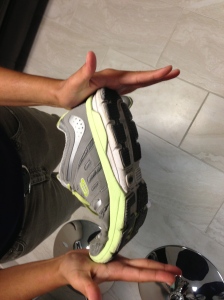The knee is the largest joint in the body and includes the tibia, femur and patella (knee cap). The patella is known as a sesamoid bone which means it is built into the tendon of a muscle. In the case of the patella it is imbedded into the quadriceps tendon. Patellofemoral syndrome is one of the most common conditions that effect the patella.
What is PFPS?
PFPS is a condition wear there is a malalignment or poor tracking of the patella as it glides between the groove on the femur when bending the knee. This malalignment or poor tracking is usually a result of weakness to the quadriceps muscle. The poor tracking of the patella results in uneven wear and tear underneath the patella resulting in pain around the knee cap.
What causes PFPS?
PFPS can be caused by repetitive motions such as squatting, kneeling and impact sports such as running.
Obesity can cause increased stress on the patellofemoral joint causing increased pain.
Improper footwear can also create imbalances on the joint
What are the symptoms?
Pain around or on one side of the knee cap
A feeling of the knee wanting to give way when walking
A feeling of the knee wanting to give way when DESCENDING stairs
Pain when sitting with the knee bent for too long
Treatment Options
Treatment for PFPS is almost always conservative and aims towards physical therapy intervention. Your physical therapist will perform a full evaluation to decide in what direction the patella is tracking. Depending on the direction of the tracking your therapist will decide which specific muscle groups to target to prevent patella tracking. During your treatment you should avoid repetitive bone on bone activities such as squatting, running, jumping and minimal use of stairs if possible. There are also several braces and taping techniques that can be used until the muscles around the knee cap become stronger. You can discuss these options with your therapist or MD.
In rare cases that physical therapy intervention is unsuccessful your MD may recommend surgery to loosen structures around the patella in order to help realign the patella in the femoral groove.


